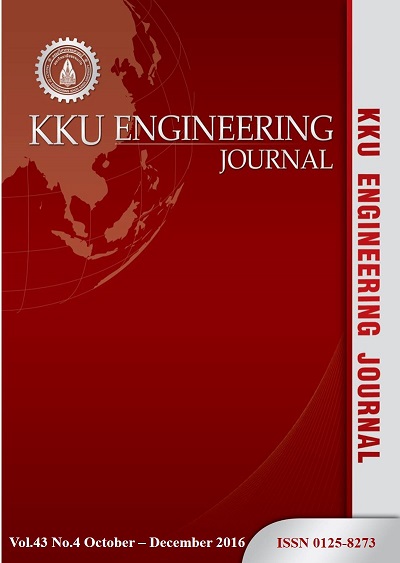Improvement of an automatic wire feeding machine in a de-soldering process
Main Article Content
Abstract
This paper presents the de-soldering process for rework of hard disk drive head stack assembly (HSA) units. An automatic wire feeder was used to place tin (Sn) onto the product. Improper feeding was determined to be one of the major causes of defective parts that had excessive amounts of Sn on the HSA. The defective parts due to the excessive amount of Sn were found to exceed 30% of production, which led to increased processing time and costs, since additional cleaning steps were needed. From the analysis, the major causes of excessive Sn were: 1) improper cutting of the wire, 2) inappropriate sizes and types of soldering materials, and, 3) inconsistent handling of the de-soldering process. This paper proposes approaches to address these three problems. First, the automatic wire feeding machine used in the de-soldering process was adjusted to properly cut wires into the flux core area. Second, the types of equipment and materials used in de-soldering were changed and optimized. Finally, a new standard method for operators, which could be easily controlled, was developed to allow consistent handling of the de-soldering process. After these process controls and machine adjustments were implemented, these excessive Sn related problems were significantly reduced. Sn contamination was found to be lowered by 41%. The cycle time was also found to be reduced by an average of 15 seconds.
Article Details
This work is licensed under a Creative Commons Attribution-NonCommercial-NoDerivatives 4.0 International License.
References
Arra M, Shangguan D, Yi S, Thalhammer R, Fockenberger H. Development of lead-free wave soldering process. IEEE Trans Electron Packag Manuf. 2002;25(4):289-99.
Aziz M, Abdullah M, Khor C, Ani F, Adam N. Effects of temperature on the wave soldering of printed circuit boards. J Appl Fluid Mech. 2016;9(5): 2053-62.
Carlos L, Aldea P, Brown M. Innovated soldering iron with desoldering vacuum. Int J of Mech Ind Tech. 2016;4(1):1-7.
Wang C, Zhao W, Wang J, Chen L, Luo C. An innovative approach to predict technology evolution for the desoldering of printed circuit boards. Waste Manag Res. 2016;34(6):491-501.
Stamatis D. Failure mode and effect analysis. Milwaukee: ASQC Quality Press; 1995.
Zhmudʹ L, Windle K, Ireland R. Pythagoras and the early pythagoreans. Oxford: Oxford University Press; 2012.
Guth LMorris J. No-Clean Soldering Processes. AT&T Tech J. 1992;71(2):37-44.
Okuya K. Flux and Solder Paste Used in Soldering and Cleaning Method of Their Flux Residues after Soldering. Circ Tech. 1991;6(5):288-95.



